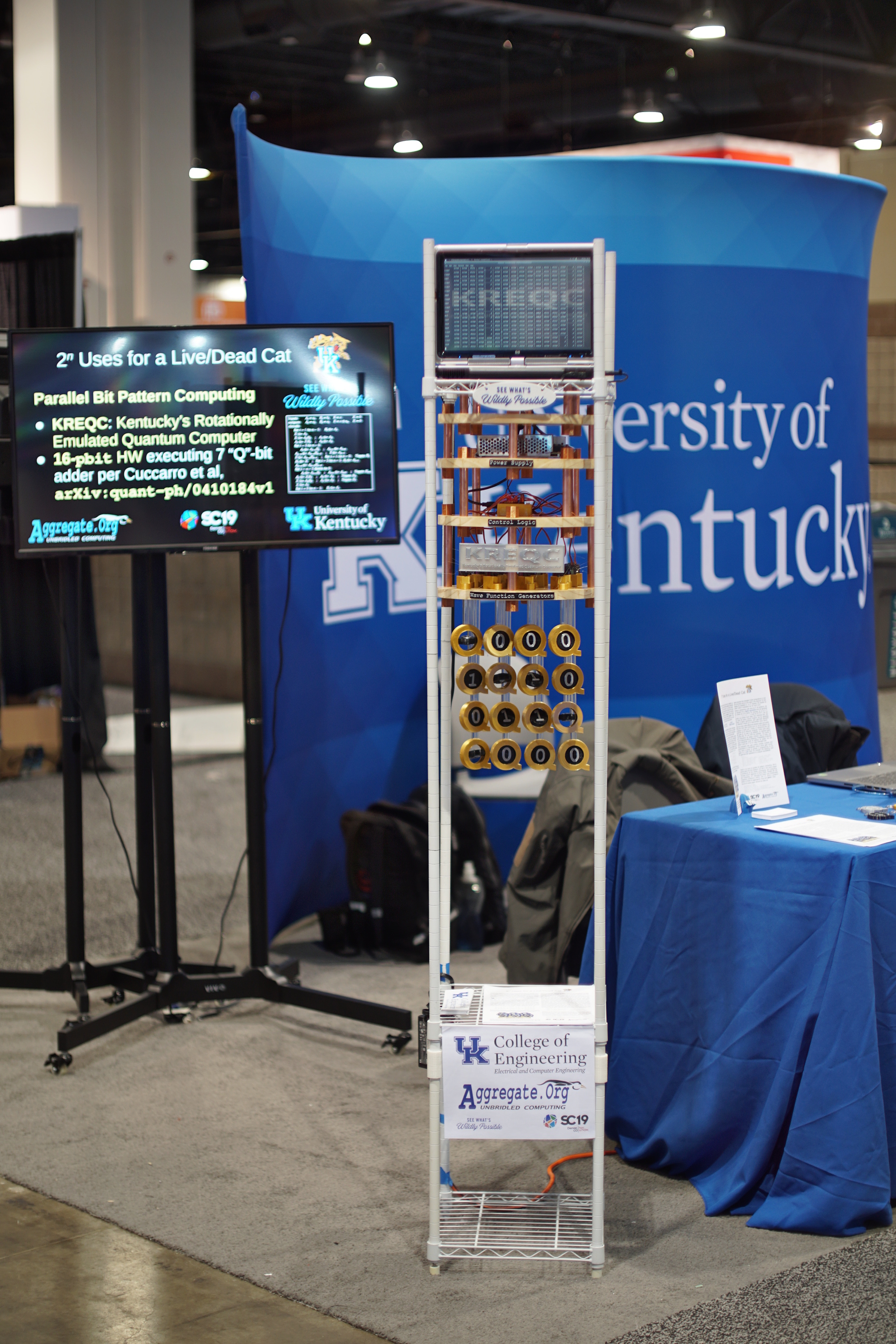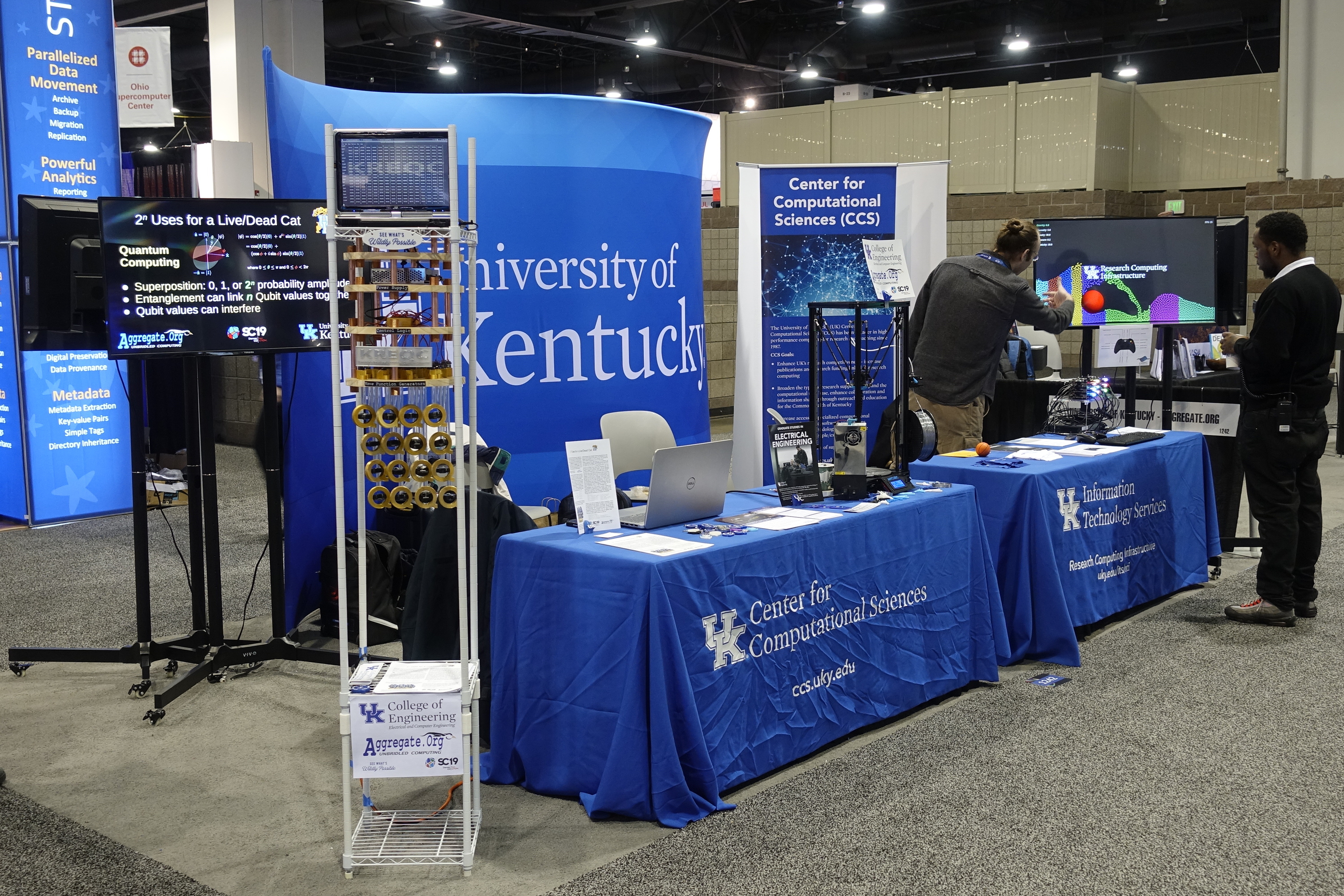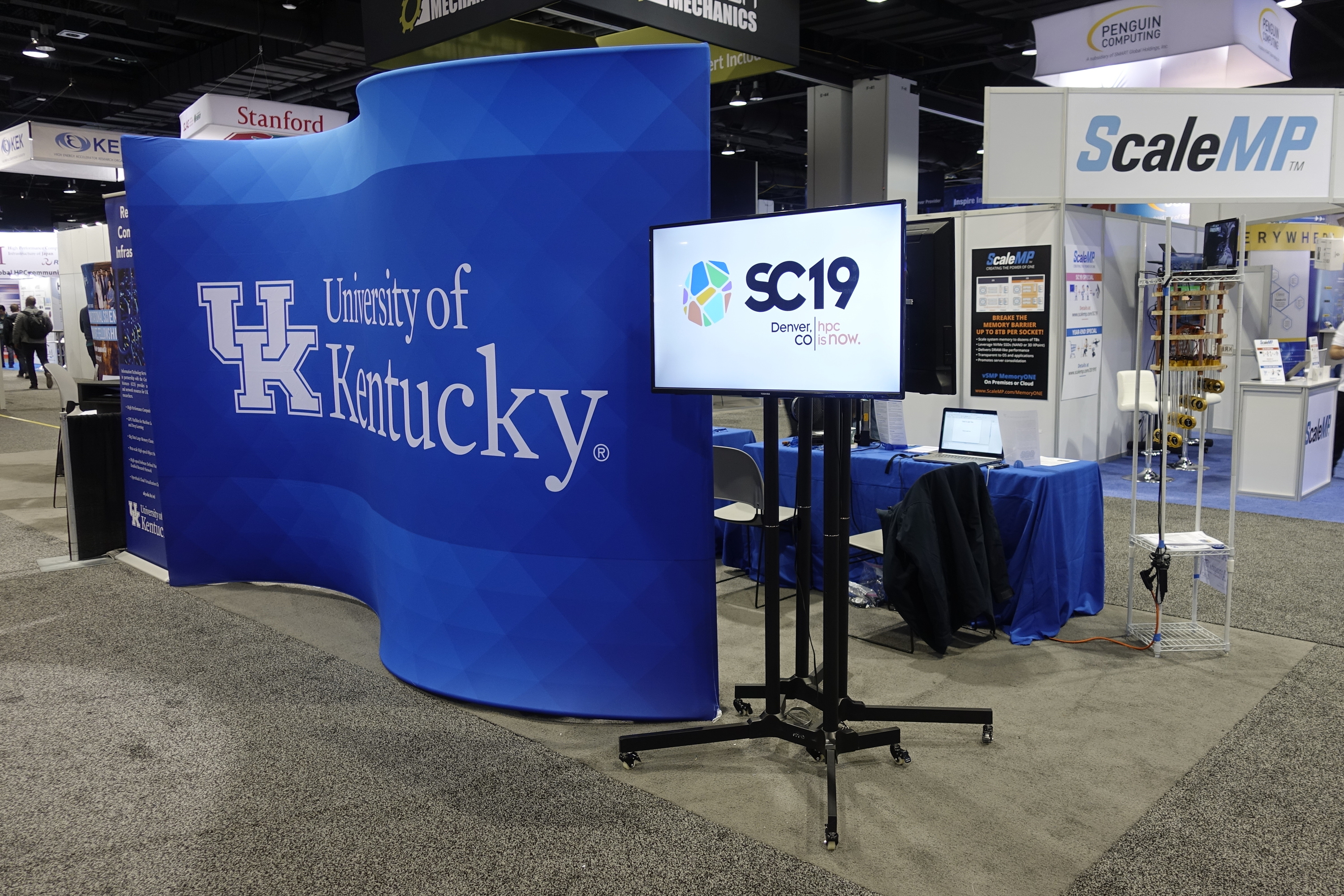
This is the home page for our 26th major research exhibit at the IEEE/ACM Supercomputing conference. The exhibit is again under the slightly changed title University of Kentucky / Aggregate.Org, reflecting the fact that it is now officially led by the Center for Computational Sciences. Of course, the informal research consortium, led by our KAOS (Compilers, Hardware Architectures, and Operating Systems) group here at the University of Kentucky's Department of Electrical and Computer Engineering, still has about half of the materials in the booth. We are booth #1242, a 10x20 booth.
As the character of SC continues to move away from the types of systems research that we do, we decided to keep things simpler. Even moreso than last year, we're really talking about just one thing this year: Parallel Bit Pattern Computing.
Parallel bit pattern computing is basically what the gate-level optimization of programs led us to. It combines aggressive runtime, gate-level, compiler optimization with a method for efficiently implementing quantum-like execution. The key idea behind all of that is to use various forms of symbolic execution to reduce power consumption, and execution time, by minimizing the number of gate-level operations required to perform a computation. For example, superposition and n-way entanglement are modeled by treating the value of a pbit as an ordered set of 2n bits, but the bit set is encoded as a generative regular expression and operations are performed directly on the regular expressions, without expanding them to a bit vector. The result is that we now are able to execute a wide range of quantum, and quantum-inspired, algorithms with fairly high efficiency. The slideshow from our exhibit gives a very quick overview, but there is also:
Last year, we had a 3D printer, some 3D-printed qubits, and a working quantum computer in our exhibit. Well, this year too. However, the printer is different and so is the new KREQC: 16 rather than 6 "Q"-bits:

Yes, our exhibit actually had a quantum computer with 16 fully-entangled qubits running at room temperature with a cycle time of about 1/2s... because we slowed it to match how fast the servos can flip the bits. We've also posted a somewhat shakey video of it running an actual quantum program. We still are not claiming this 16 "Q"-bit machine is useful as a computing device, but it is able to run real quantum algorithms at a scale that makes it clear we must have a more efficient computing mechanism than the typical approaches for modeling quantum execution. Despite the name, Kentucky's Rotationally Emulated Quantum Computer, it really isn't emulating the quantum phenomena, but implementing roughly equivalent computational properties in an entirely different way.
Due to trouble with our 360-degree webcam, we don't have a booth timelapse this year. However, here is the front and back of the exhibit:


Are website updates ever done?